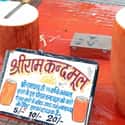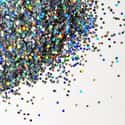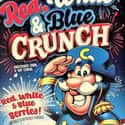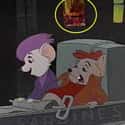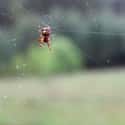-
(#6) What Is The Mysterious Plant In A Popular Indian Street Snack That Vendors Won't Reveal?
When journalist Barkha Kumari bought a popular snack from a street vendor in the southwestern India state of Karnataka, she ended up unearthing a mystery that's been debated by botanists for decades. In an article for Atlas Obscura, Kumari said the vendor was slicing ultra-thin, large slices from what looked like the trunk of a tree. The snack itself was bland in flavor, but crunchy, juicy, and seasoned with lime and other sweet or savory options.
The vendor told Kumari it was a tree root from the forests called Bhoochakra Gadda (or Ram Kand Mool in the north). Looking the name up online, she discovered the scientific name, Maerua oblongifolia. But the more she researched Maerua oblongifolia, the less it fit with the snack. Botanists told her its roots were dry and inedible.
Further investigation revealed that in 1994, several researchers concluded the snack was from the base of a local agave plant species. A later 2010 DNA barcoding analysis concluded it was an 89% match to Agave sisalana.
Vendors have kept the plant's identity shrouded in mystery, and sell only a few slices at a time. Agave is widespread in India, but can be toxic if eaten in large amounts, giving credence to the theory. But when Kumari spoke with a local professor who'd studied agave extensively, he said it was "impossible" the food was agave, which has an entirely different taste and mouthfeel.
Kumari even tried to speak to a vendor of the snack directly about where he sources the plant. He responded, "Ask anything but this, please. Nobody will tell you anything. This is how this business is."
-
(#2) Who's Buying All The Glitter?
Before 2018, no one gave a lot of thought to aluminum metalized polyethylene terephthalate, AKA glitter. It was a shiny, celebratory substance used on preschool craft projects and music festival attendee faces. End of story. But a New York Times piece on the glitter industry revealed there was so much more about glitter we didn't know, and could never know.
For the article, journalist Chris Maggio reached out to the two main US glitter companies, both in New Jersey. The first refused to be interviewed, telling Maggio it was "a very private company," while the second, Glitterex, left readers with more questions than answers.
Glitterex, which, according to its website, has over 50 years in the biz, was wary of Maggio visiting the company's factory and laying eyes on its advanced glitter-making technology. The company eventually relented, and Maggio and a Glitterex manager had the following exchange:
When I asked [Glitterex manager] Ms. Dyer if she could tell me which industry served as Glitterex’s biggest market, her answer was instant: “No, I absolutely know that I can’t.”
I was taken aback. “But you know what it is?”
“Oh, God, yes,” she said, and laughed. “And you would never guess it. Let’s just leave it at that.” I asked if she could tell me why she couldn’t tell me. “Because they don’t want anyone to know that it’s glitter.”
“If I looked at it, I wouldn’t know it was glitter?”
“No, not really."...
I asked if she would tell me off the record. She would not. I asked if she would tell me off the record after this piece was published. She would not. I told her I couldn’t die without knowing. She guided me to the automotive grade pigments.
The exchange led to fervent internet debate about who was buying bulk glitter and why they didn't want anyone to know it. Theories ranged from the US military to Crest toothpaste. In 2019, the podcast Endless Thread attempted to solve the glitter mystery and concluded that the secret No. 1 use of glitter was probably boat paint, after talking to someone in the boat-making industry who buys a lot of glitter.
Still, Glitterex refused to confirm or deny this, and many sleuths weren't convinced, as many boats are obviously glittery. Glitterex also lists its use in the gel coat and paint industries on its site homepage, making those uses seem hardly a secret. The debate continues.
-
(#4) Why Did 'Sesame Street' Air An Episode With 'Crack' Creatures?
In the late 1970s, a boy named Jon Armond watched a Sesame Street episode. A short, animated segment of the episode showed a girl in her bedroom with cracks in her wall. As she looks at the cracks, they come to life, taking her on a journey into the wall with animals named "Crack Camel," “Crack Hen,” and "Crack Monkey." Then, she meets a final growling, decaying figure, which Armond remembered as "Crack Monster."
According to Armond, he thought about this clip every day for 30 years, simultaneously "terrified of it and mesmerized by it." He frequently brought it up to other people his age, hoping someone else remembered the segment, and finally in the digital age, took his search to the internet.
Eventually, in 2008, Armond came across a blog post by Jennifer Bourne, a cartoonist who was also searching for the elusive Sesame Street clip known as "Cracks." Other commenters were also haunted by the segment, and a "Cracks"-hunting community formed. While Children's Television Workshop (CTW, the production company behind Sesame Street) offered little help with who created the segment, or when and why it stopped airing, Armond's contact at CTW Archives did inform him that it first aired on February 10, 1977, in the first 15 minutes of episode 979.
Things got even more bizarre in late 2008, when Armond received an untraceable fax from someone saying they would send him the copy of "Cracks" if he signed an agreement to not post it online or show it to anyone else. Armond signed, and six months later, received an envelope with no postage or return address containing a DVD and a note inside, reading, "We trust this completes your search."
Armond did show the segment to Bourne but refused to post it online, per the contract he signed, and other web sleuths still clamored to see the clip, including Daniel Wilson, founder of The Lost Media Wiki. After years of trying to track down the clip, Wilson received his own anonymous communication in 2013: an email with an attachment titled "Cracks." Wilson hadn't signed any agreement, so he posted the lost video publicly.
It turns out the terrifying figure Armond remembered as the "Crack Monster" was actually the "Crack Master." Why a segment featuring "crack creatures" stopped airing doesn't seem like such a mystery. But the creator of the segment, and the person who sent the anonymous copies, remain mysteries.
The Studio 360 podcast attempted to track down answers and found the woman who voiced the girl, Dorothy Moskowitz, also the lead singer of '60s experimental rock band The United States of America. But though Moskowitz described recording the episode as an odd experience, she couldn't remember the names of anyone involved, recalling only a mysterious woman dressed in white linen.
-
(#9) What Happened To Cap’n Crunch’s Freedom Crunch Cereal?
Perhaps the greatest mystery since Serial came in the form of cereal in October 2017. The breakfast food blog Cerealously posted about a new limited-edition Cap'n Crunch variety, Freedom Crunch, that was described on grocery sites as "coming soon." However, Freedom Crunch never materialized, and it was removed from store sites. According to Cerealously, the company itself said it wasn't a real product and another inside source said it was a scrapped idea.
In early 2018, however, Cerealously received an email from a Minnesota cereal consumer who claimed Freedom Crunch did come out in their area, circa Independence Day 2017, and they had a picture of the elusive cereal to prove it. Assuming the photo is real, it's the only proof Freedom Crunch ever physically existed.
Making matters even more bizarre, on July 4, 2019, Cap'n Crunch released a different limited-edition patriotic cereal: Red, White & Blue Crunch. The cereal, which contains red, white, and blue crunch-berries, looks remarkably similar to the lost Freedom Crunch, though a saluting eagle is removed and the flag imagery is replaced with fireworks.
Cap'n Crunch has yet to provide answers, but further Reddit discussion can be found on a post by u/331.
-
(#5) Who Is The Topless Woman In Disney’s ‘The Rescuers’?
Although many Disney films have been accused of inappropriate subliminal messaging, the first and only time Disney actually recalled a video occurred in 1999, when The Rescuers was re-released on home video.
The animated film, which debuted in theaters in 1977, contained two frames featuring a topless woman in a background window as mice Bernard and Bianca fly through NYC on the back of an albatross. It's so brief (two out of 110,000 frames in the film) that it's imperceptible at normal viewing speed, as it was shown when it appeared in theaters in 1997, 1983, and 1989. The first release of the film on video, in 1992, used a different print that did not contain the woman.
Once her presence was discovered in the '99 version, Disney recalled 3.4 million copies of the film. Disney spokeswoman Claudia Peters explained the recall was "to keep our promise to families that we can trust and rely on the Disney brand to provide the finest in family entertainment." However, Peters declined to elaborate on who was responsible for the offending image, or what their motive may have been, other than to say it was an internal matter that occurred during the film's production.
Who inserted the image, why they did it, and the identity of the topless woman remain a mystery.
-
(#8) Where Did The Rumor Begin About Humans Swallowing Spiders In Their Sleep?
In 2001, fact-checking website Snopes published a post about the oft-heard "fact" that the average human swallows eight spiders in their sleep per year (sometimes heard as in their lifetime). Snopes, like many websites, established that this is a myth. According to Scientific American, "A sleeping human is not something a spider would willingly approach," due to the vibrations we make during slumber. Also, if it did happen, you'd probably wake up.
Snopes went further, though, to point out the origins of this rumor, noting that this fake bit of news was invented by columnist Lisa Birgit Holst in a 1993 article for PC Professional. Snopes reported that Holst had made up the joke claim in an effort to prove the gullibility of people on the internet. She actually took the myth from a 1954 book, Insect Fact and Folklore, which includes a collection of common bug-related beliefs.
Redditors, though, couldn't track down Holt's existence, or even the publication she supposedly wrote for. Some eagle-eyed theorists discovered that "Lisa Birgit Holst" is an anagram for "This is a big troll," leading them to believe Snopes might have made the whole thing up.
Twenty years later, Snopes finally came clean. The site had, in fact, made up the Holst story as its own prank about not believing everything you read on the internet. While Holst and her article never existed, Insect Fact and Folklore is a real book, though it contains nothing about the spider rumor.
As for the actual origins of the urban legend, Snopes is still stumped. A 1999 Guardian article lists the spider myth in "50 top pieces of trivia," but the site is still investigating where the rumor might've begun.
New Random Displays Display All By Ranking
About This Tool
Our data comes from Ranker, If you want to participate in the ranking of items displayed on this page, please click here.

